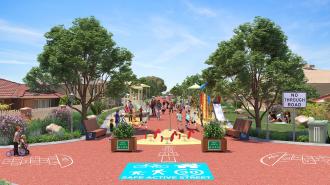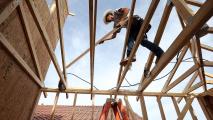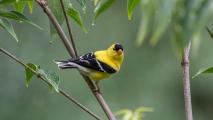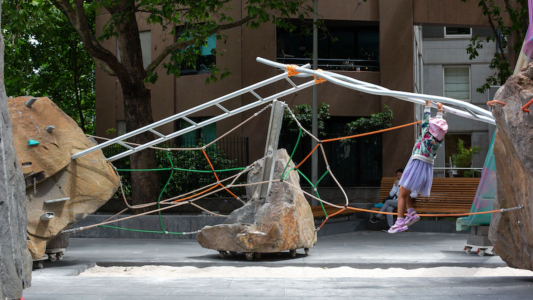You might remember your time as a child playing outdoors with friends and walking to school. These activities had tremendous benefits for our health and development.
Today, parents report barriers to letting their kids play, walk, and ride in their neighborhood. The safety of local streets is a major concern.
One way to boost communities is to create “superblocks for kids”. Pioneered in cities like Barcelona, a superblock covers several neighbourhood blocks reserved for shared use by cyclists, walkers and residents who simply want to use the street space. Superblocks allow low-speed access for residents’ cars, but exclude through-traffic.
Superblocks have evolved from concepts dating back to the 1970s. Retrofitted and planned examples of more liveable and safer streets can be found from Melbourne to Perth, where there are interesting alternative designs in Willetton and Crestwood.
Transforming neighborhoods in this way enables us to once again enjoy the public space right on our doorsteps – the street.
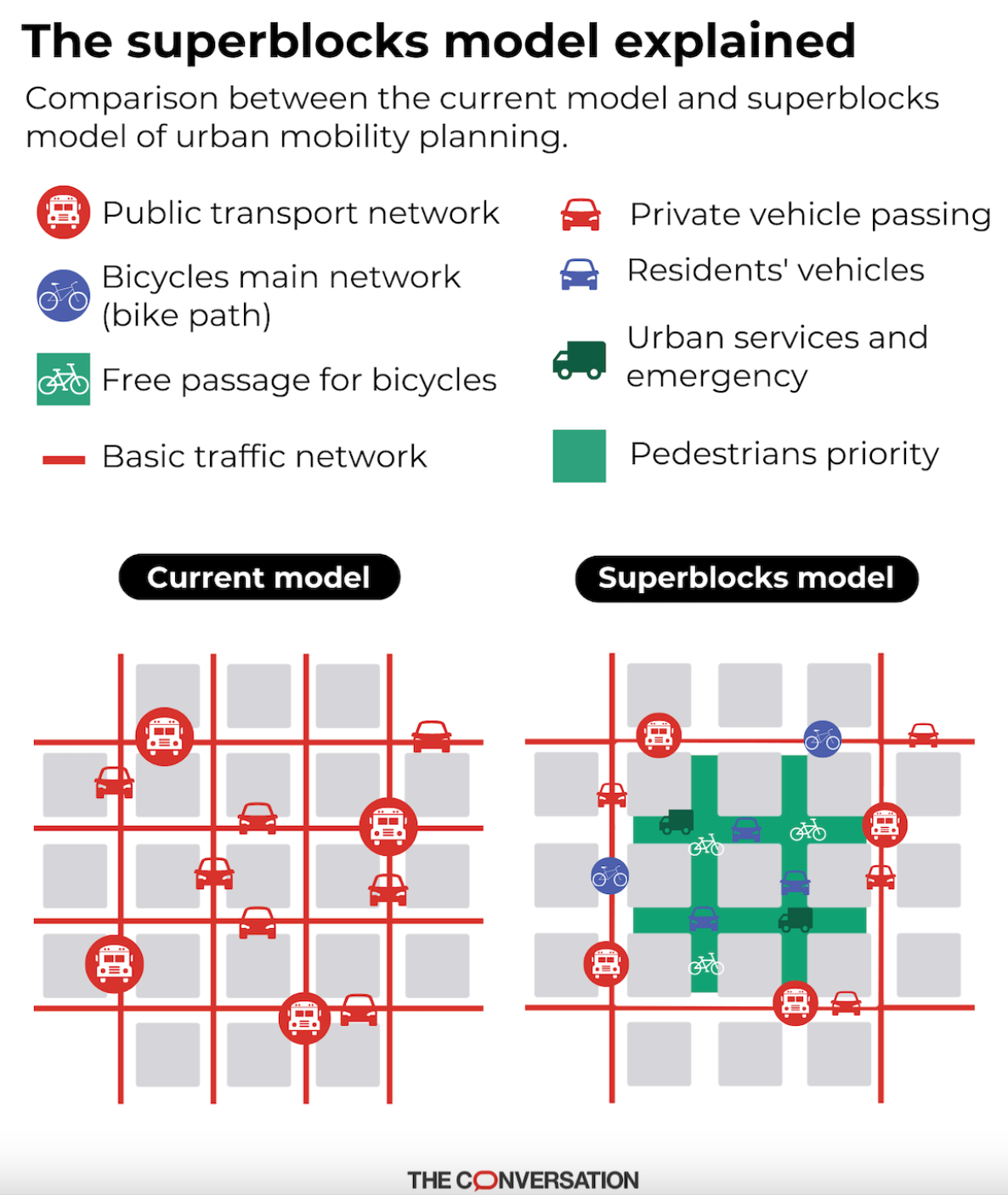
Superblocks for kids are a low-cost fix
Superblocks are a low-cost solution to the problem of the residential “stroad” – a street-road hybrid that drivers use to avoid congested main roads, many at unsafe speeds.
These stroads are a troubled mix of two different functions: roads are through routes, and streets connect neighbourhoods socially and physically. Streets connect houses to local parks, shops and through routes, but are also public places themselves. The dual role of stroads comes at the expense of residents and their children.
Superblocks for kids can be retrofitted to existing suburbs to create safer, quieter, and more play-friendly streets. They are typically about a square kilometre in area, bounded by main roads and features such as rivers. Ideally, superblocks are clustered together to provide safe access to local amenities and public transport hubs.
Everyone can still drive to their home in a superblock, but they might have to take a slightly longer, more circular route. This can reduce traffic by nudging residents to walk and cycle short journeys within their superblock.
Various low-cost “filters” exclude through traffic. These filters include:
- pocket parks – small areas of community green space
- modal filters – bollards, gates or planters exclude cars but allow access for walkers and cyclists
- diagonal filters – used at four-way intersections
- end-of-street filters – open cul-de-sacs to walkers and cyclists
- bus gates – automatic numberplate recognition or rising bollards allow bus access
- banned turns
- one-way streets.
The resulting superblocks are places where kids play on the streets, which are quiet and easy to cross. There’s shade and shelter, places to stop and rest, things to see and do, and the air is clean. People feel safe and relaxed. Neighborhoods like this promote public health and community camaraderie.
Four examples of streets that could be transformed in this way are shown below:
Lyall Street, Redcliffe, Perth
A pocket park breaks up a rat run to the airport.
The Avenue, Mount St Thomas, Wollongong
Plantings and bollards eliminate a known rat run.
Lithgow Street, Abbotsford, Melbourne
Wider kerbs make school drop-offs and pick-ups safer.
Meymot Street, Banyo, Brisbane
A pocket park and residents-only car access create a safer and quieter street.
Rat-running is a big problem
Almost twice as many cars are on Australian roads today as 20 years ago. Coupled with the rise of satellite navigation technology, this has led to more drivers using residential streets as rat runs to avoid congested main roads.
Decades of prioritizing cars in Australian communities have created a serious safety issue. Overall, serious road injuries are on the rise. Despite small declines in road deaths, deaths on local streets haven’t fallen.
People feel less safe on their local streets, but we know what we can do to improve safety. Preventing rat-running leads to cleaner air, less noise, safer streets and more walking, riding, wheelchairs and mobility scooters. These results all promote stronger communities.
Everyone benefits from kid-friendly neighborhoods
A remarkable feature of building neighborhoods for kids is how quickly residents reoccupy their streets. People emerge from their houses to talk, their voices no longer drowned by vehicle noise. Thoroughfares become communities. Children come out to play.
As physical activity researchers, we know that getting children to move more is an urgent issue. Australian kids score a D- for overall physical activity levels on international ratings. Australian adults also have low levels of physical activity.
Neighborhoods for kids help everyone enjoy the benefits of becoming more active. For kids, the street can connect them to nature and help them develop movement and independent travel skills for life.
Increasing neighborhood liveability also boosts house prices and reduces noise pollution.
Leaving the car at home for short local trips
Superblocks make it easier for families to choose the “right tool for the job” for small local trips — a bicycle over a car. This saves money and improves health.
All these small trips add up. For example, two-thirds (2.8 million) of daily car trips in Perth are under 5km — a 20-minute bike ride or less. In Melbourne, 41% of trips are under 3km, but 58% of these are by car. That’s 3.6 million car trips a day.
Where should Australia start?
Our research highlights the need to listen to communities, and kids in particular, when designing neighborhoods.
In the vast majority of cases, any initial opposition to creating kid-friendly neighborhoods soon dissipates. Residents see the benefits of safer and more pleasant streets for themselves and their families.
Two-thirds of Australians support improving their neighborhood to help them be more active. We should start by creating neighborhoods for the communities that need it most — those with the poorest access to green space and public transport, most through traffic and crashes, and highest levels of childhood obesity.
Get your community talking again! You can start by hosting a temporary play street! Demonstrating its success will help when asking your council for permanent changes
This article is republished from The Conversation under a Creative Commons license. Read the original article.
